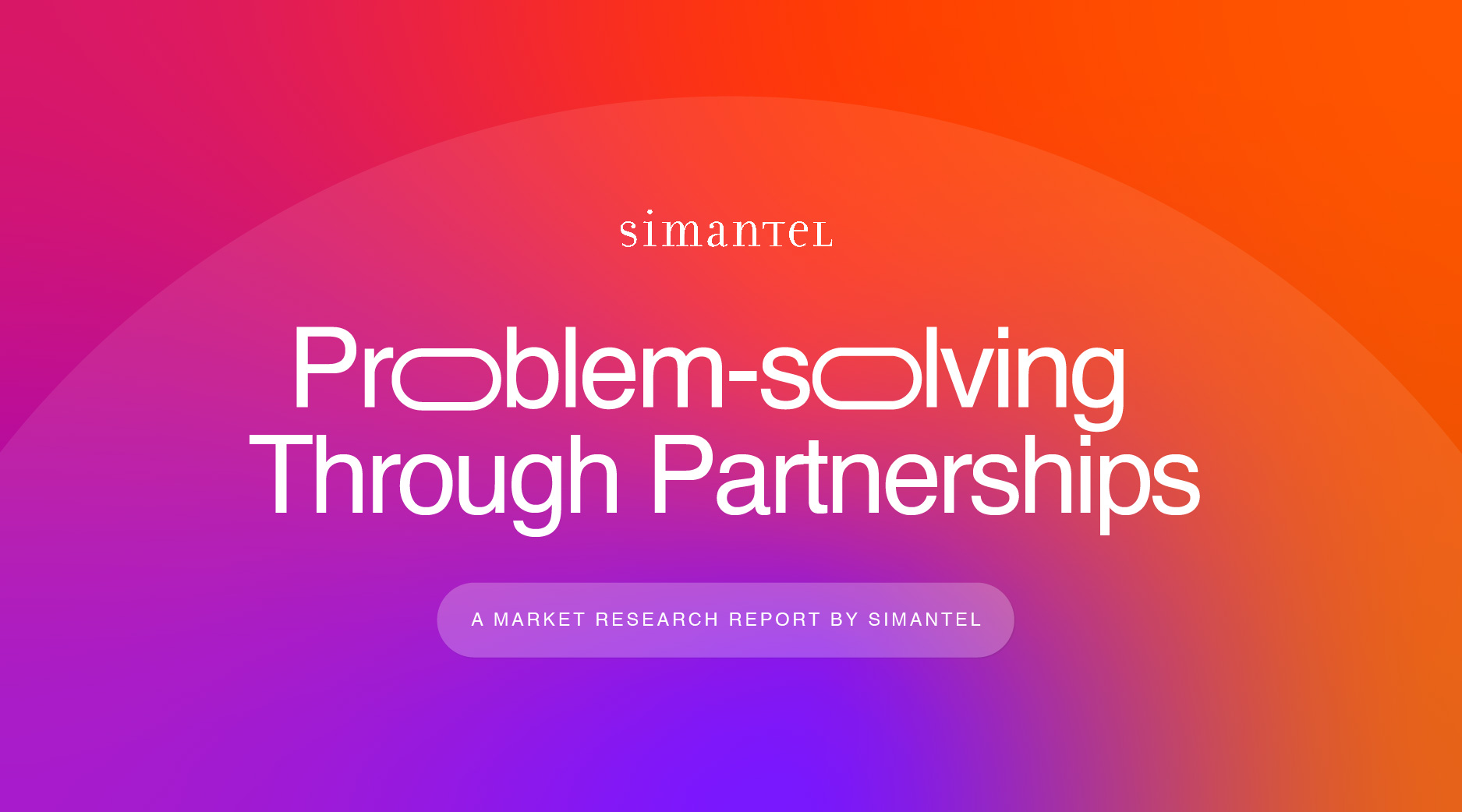I’m not a fortune teller, but I do read a lot.
Whether your organization is at the cutting edge of marketing or just starting to dabble in more advanced tactics and technology, we’ll be covering ways you can embrace the trends we’re predicting in 2020. We’re going to explore three industry trends, the obstacles and barriers marketers face when trying to evolve their strategies and practical applications you can start planning for today.
As you read through, let’s remember predictions are educated guesses.
Sometimes we knock it out of the park, like last year. We covered voice search as one of the emerging trends of 2019. At the time, nearly 41% of adults were using smart assistants every day. According to ComScore, that trend continues to increase, with projections that at least half of all search in 2020 will be voice search — which is why it is critical for marketers and content creators to start planning now to ensure their content is voice search-ready. SEO and SERPs have even seen impact to rankings based on voice consideration in the last update to the Google algorithm.
 If there’s no certainty in trends, why even consider them?
If there’s no certainty in trends, why even consider them?
The reason we do these forward-looking exercises isn’t to pat ourselves on the back when we nail a prediction, but to help our clients and other marketers lay a foundation for their planning sessions beyond next year’s SMART goals or specific, check-the-box marketing material development.
We want to help today’s marketers look out for future marketers, so we don’t wind up like Future Li, cookie-less and sad — or worse, budget strapped when the opportunity presents itself to leverage a new technology or another incredibly impactful tactic.
Trending: Brands that master 1-to-1 customer interactions will win business.
The brands that master 1-to-1 customer interactions and put their customers at the center of their efforts will win business. The ones who don’t will struggle.
A customer’s experience with your brand has to be consistent from the very first search through the ownership experience. This is particularly challenging for highly matrixed organizations with distribution channels that live adjacent to, but not within, the corporate framework.
I’ve never known a marketer who would say their sales team sucks, or their distributors don’t provide killer customer service. Usually it’s “Our systems are so disconnected” or “Our sales teams are overloaded.” If you can hear yourself screaming into the void “There has to be a better way for us to support the customer experience!” — you aren’t the only one.
What Our Client Says:
“How do I show customers that I not only know my products, I know them; I know their needs?”
What the Client Means:
“I desperately want and need to deliver on personalization across the customer journey.”, And I will tell you, we have smart clients: They recognize that it’s not easy, but they’re committed to making it happen, one step at a time.
The Solution:
1-to-1 interactions. And typically, the first step is an honest inventory of what we know about the customer and how we can use that to make our interactions with them smarter.
So, let customers slide into your DMs. Over the last year, we’ve witnessed a massive insurgence of brands leveraging messaging apps.
 And it makes sense. WhatsApp has 1.5 billion global monthly users. BILLION. Facebook Messenger has 1.3 billion, and WeChat has 1.1 billion. When we look at the U.S. market alone, we find that according to Neilsen, private messaging is the second most popular way consumers communicate with brands. That same Neilsen report found that 63% value the ability to make a purchase or pay a bill in-app.
And it makes sense. WhatsApp has 1.5 billion global monthly users. BILLION. Facebook Messenger has 1.3 billion, and WeChat has 1.1 billion. When we look at the U.S. market alone, we find that according to Neilsen, private messaging is the second most popular way consumers communicate with brands. That same Neilsen report found that 63% value the ability to make a purchase or pay a bill in-app.
It’s not surprising when you consider that messenger app use has started to significantly outpace social media use. In 2020, it will no longer be a matter of if you should be investing in messaging apps as customer communication channels, but determining which apps have the greatest reach for you.
If you find yourselves questioning whether your customers are experiencing email fatigue or banner blindness, messaging app campaigns might provide the kick start to your marcomm efforts you’ve been looking for. With 65% of Millennials and 65% of Gen Xers favoring messaging over emailing, there’s ample room to stand out and meet consumer demand in this channel.
Don’t have time? Let the robots do it. And make sure to target people, not audiences.
So, whether you’re looking to get started with chat bots and push campaigns or simply employing a team of reps to be there for your customer, messaging apps should be a key consideration for the future of your marketing channels.
Trending: Organizations are rallying around Customer Experience (CX) as a company value.
I don’t know a single organization who can’t find some truth in the fact that the primary hurdle to rallying around CX is that internal misalignment is causing poor customer experience. Even those organizations who live and breathe CX admit that budgeting is their greatest nightmare because dollars are generally still allocated based on department, not based on alignment to the customer journey.
And it sucks. Right? I think we can all say that. But while we may not be able to reorg our companies overnight into our vision of a well-oiled, customer-centric machine, we can take steps towards becoming champions of CX.
What Our Client Says:
“My leaders have goals that conflict with good CX.”
What the Client Means:
Cross-departmental collaboration is great, but continues to be difficult and could use some improvement.
There’s an opportunity here to improve CX by starting internally. Say your organization is divided up between new products and service products. A unified message might make the most sense to the customer, but you have different goals to achieve and limited time and resources that create barriers to collaboration.
Which leaves us not knowing what we should be doing with very few paths forward to be able to achieve that vision of customer excellence. But that doesn’t mean we shouldn’t start somewhere. Every step toward better CX matters. It isn’t an all-or-nothing matter. Let’s explore some ways we can start to move our organization towards CX-centric thinking.
The Solution:
There are actually two solutions we’ll touch on here: marketing through the consumer’s lifecycle and artificial intelligence.
First off, Lifecycle Marketing. We know the funnel is dead. We say it all the time. Customer interactions now happen across a non-linear journey. That doesn’t mean targeting users at specific points in their lifecycle as a customer or prospect isn’t critical, because it is; it means we can’t just think about those campaign-based moments in a vacuum, or else customers begin to develop an inconsistent experience with the brand.
We know that when customers feel an emotional connection to a brand, the lifetime value of that customer can increase by 300%. An emotional connection doesn’t have to be a heart-wrenching connection to advertising. In fact, that’s not enough. We call that a hook. It’s enough to bring someone into the door, but if they don’t like what they see once they get there, they’ll leave.
Take for example my favorite commercial. The little boy loads up stuff into the back of a car with his puppy, and ten years later that same little boy is loading up his life into the back of that car and says a gut-wrenching goodbye to his dog as he heads off for college. Love. It’s what makes a Subaru a Subaru. Tears. Every. Single. Time.
My Emotional Connection with a Brand
I recently bought a new car. The very first place I went was to drive a Subaru. And I didn’t love it. I had a borderline identify crisis about how much I didn’t love it.
I didn’t love the interaction I had with the staff at the dealership.
I didn’t love the layout of the buildings and lot.
I didn’t love the price point in comparison to the features.
I didn’t love how frequently they called after my test drive.
I didn’t love that the staff wasn’t familiar with their online promotions.
I didn’t hate it. I just didn’t love it.
AND LOVE IS WHAT MAKES A SUBARU A SUBARU.

(This is me, driving my Jeep.)
Subaru’s marketing speaks to me at every level. I KNEW I was a Subaru girl.
But I ultimately liked my Jeep experience better. I loved the rep at the dealership. I loved their approach to test drives and how simple the purchase process was. I loved the accuracy of the configuration and pricing tool. I loved how informed they were about every aspect of the vehicle, current offers, etc. And, I love that when they need to get ahold of me, they text me. They understand me.
And when it’s time to service the machine, I’ll take it to them — not because they’re the “experts.” Not because they have the best price (because they probably don’t), but because I LIKE them, and I know it will be easier. Because they made it easy to like them, from my first browsing session online to my decision to give them my money.
Sure, I hear you. That’s an entire organizational shift. I can’t drive that kind of change! If you can’t solve for everything, though, why not explore making the online experience do more of what offline reps can do by adding interactive content where it makes sense.
Solution #2
The future for future-proofing: Consider interactive content.
Interactive content can be served in so many ways. It can be a game, a tool or calculator that allows you to assess the best recommendation for you based on your situation. The example below helps the consumer assess which piece of heavy equipment is the best fit for them based on the work they do, their product levels, how they define value and other critical questions and provides a recommendation with more links.
We covered this recently in our Interactive Content is King article, but it’s worth restating. When you employ interactive content, you just get more out of your investment.
- More conversions:Interactive content creates two to three times more conversions than passive content (Kapost)
- More traffic: Interactive content generates four to five times more page views than static content (LinkedIn)
- More education:Users ranked interactive content as being 93% more effective at educating the buyer than static content (Inc)
- More enjoyment:91% of B2B buyers prefer to consume interactive and visual content (DemandGen Report)
For more in-depth information on becoming a CX Champion, check out our recent CX Webinar recording.
Trending: MarTech That Works Smarter, Not Harder
The next trend we want to dive into is smart MarTech. We predict that 2020 will be the year we start to see more and more companies try to cut back on their MarTech stack and focus on the platforms that work the hardest for them in terms of both capabilities and results.
In 2018, MarTech investing was up by 29%. However, we predict that if that spend continues, it will largely be across fewer contracts with fewer providers. More likely, spend will also get reined in.
This will be beneficial to the all-in-one providers as well as the smaller technology providers that truly deliver unique and differentiated solutions. Those solutions that do little more than API in another platform’s data will be in for a rude awakening.
In 2020, be prepared to show platform-dependent performance for the items you want to keep and be prepared to have leaders asking you to deliver on platform-specific ROI.
What Our Client Says:
“This tool is great! But it doesn’t work with our legacy systems.”
What the Client Means:
Typically, this means a brand is letting their existing technology drive their strategy rather than developing the best strategy possible and letting that drive the rest. There’s an opportunity to simplify and streamline, but they just aren’t there yet. There is an opportunity here.
The Solution:
Artificial Intelligence. When it comes to programmatic advertising and automated bidding, AI uses an algorithm to define the audience that will be most likely to convert when served the right ad.
The algorithm accounts for what device a user is on, what time of day it is, user demographics, the content publisher and additional variables. This is all added up to create a score that denotes how likely the user is to take the desired action.
From there, the user is served an ad, and the machine records what the user did. The machine takes that insight and adjusts the algorithm according to the success of previous media placements — and it’s all happening in a few seconds rather than over the course of days or weeks like many organizations are used to with human-managed media buying.
Or, we can look at chatbots, who with a little bit of training can begin to simulate human conversation in real time with real users and consumers. Chatbots are available in nearly every application today, from messenger bots to website support to telephone support.
Next-best purchase tools are another AI tool to take notice of. Nearly every eCommerce company uses product information management systems to recommend other “like” products to customers. However, the companies that are paving the way for the future are leveraging machine learning algorithms that can analyze actual user behavior and sales data to recommend and predict other likely products a user would purchase, then begin marketing those products to customers. For repeat purchases, machine learning algorithms can begin to measure the frequency of a purchase to begin to directly upsell add-ons before a reorder is placed.
Not sure where to start? Look to smarter partnerships to help you get the most out of your stack.
Ok, so let’s recap.
- Trend 1 – Companies will look to master 1-to-1 experiences, and those who do will profit
- Trend 2 – Organizations will rally around Customer Experience as a core company value
- Trend 3 – MarTech stacks will be reined in and made to work more efficiently
PRO TIP: If you can only do one thing in 2020, let it be making business decisions based on consumer wants, needs and desires. Let it be about the people. The biggest thing to take away from these three items is that it is going to be crucial that you understand your audience and use your data and tech in the best ways possible to reach consumers.
And sometimes, you need a partner to facilitate those tough conversations. If there’s a problem to be solved and decisions to be made, a workshop can be powerful. If you’re looking for a partner, our certified facilitators guide tough conversations, create alignment and provide a toolbox of exercises.
Check out our webinar: Behind the Battle – Confronting Today’s Marketing Trends





